Published in May 2021, this book is number 17 in the Crowood Metalworking Guides from publisher The Crowood Press. It measures around 215mm x 260mm, is 144 pages long, and has 550 photographs and illustrations. It has a published price of £16.99, and at the time of writing it can be obtained online from the publisher and from Amazon for £16.99.
This book provides a valuable introduction to the mysteries surrounding the correct way to grind metalworking tools and cutters so that their cutting edges lie at the precise angles required to ensure effective cutting, and when sharpening tools so that their original geometry is faithfully recreated.
The author has a lifetime of experience in making models, clocks, and workshop accessories, using both hand and machine tools, and this is his fifth Crowood Metalworking Guide.
The layout of the book is very similar to the popular Haynes series of vehicle repair manuals. The 550 photographs provide detailed close-ups of the instructions described in the text, whilst the instructions themselves are clear and simple to understand.
Three introductory chapters explain the different types of media used for sharpening tools, the various types of tool and cutter grinders and their accessories, and the three basic movements of swing, tilt and rotate to position a tool against a grinding wheel to ensure correct tool angles and sharp cutting edges.
“Sharpening in Practice” is the title of the last chapter, and has eight sections describing how to use most common cutters, including simple flat face cutters, lathe tools, fly cutters, saw blades, faceted drills, milling cutters, reamers, and taps and dies.
Further information at the back of the book describes the types of materials to be used for particular tasks, and a number of very useful tables such as thread diameter x pitch/pitch diameter/helix angle; properties of different size abrasive materials; swing and tilt angles to set up for grinding a top face; heights to create clearance angles.
It identifies the two main types of workhead, discusses ways in which their geometry affects typical sharpening setups, and contains useful tables for setting cutting and clearance angles. With general advice on tool and cutter grinders, and examples of the use of workholders to suit a range of tools, it part of th book is particularly useful, as is the information on abrasive materials and the types and shapes of grinding wheels suitable for use on a tool and cutter grinder.
Finally, there are photos of accessories that can be made to simplify setups, including workheads, toolholders, and fixtures used to hold circular saws, parting tools, and dies, as well as an angle gauge to quickly set clearance angles on reamers and milling cutters.
The pages below show the clarity of explanation that the author has achieved in the Basic Movements chapter.
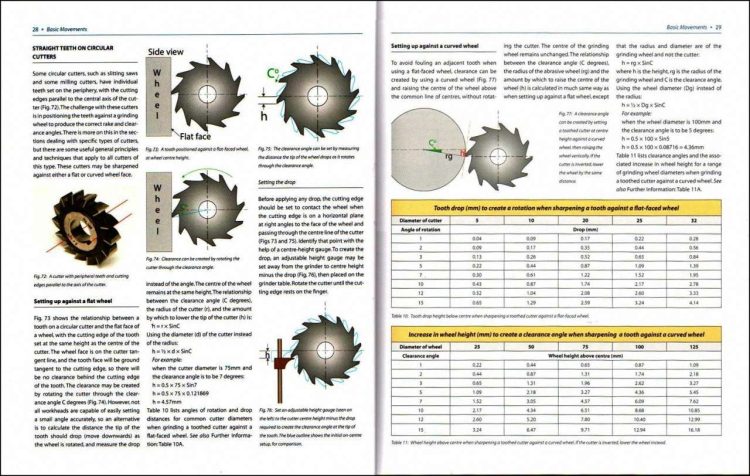
What may be thought of as a simple task is explained in great detail in the Tool type: Simple flat faces section.
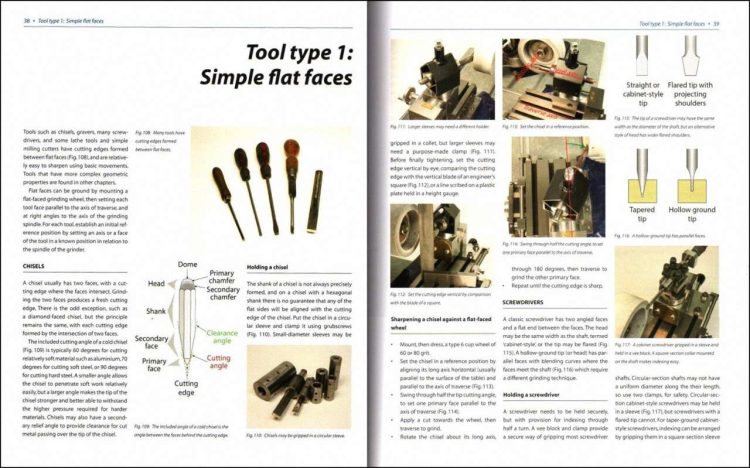
The complexities of settings up lathes are clearly shown in the Tool type: Lathe tools section.
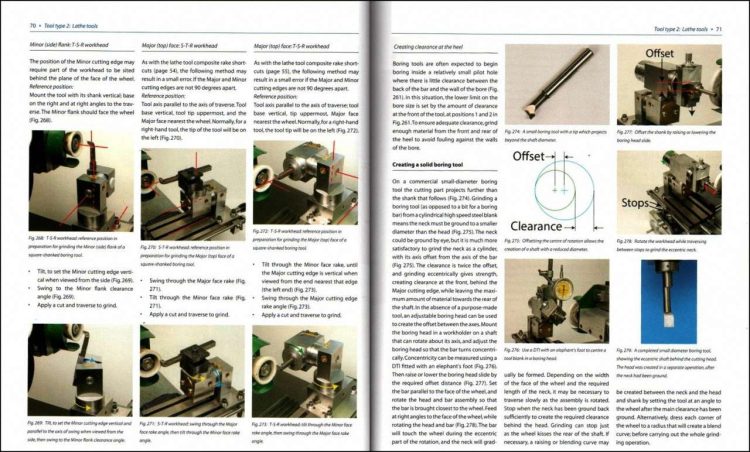
The Tool type: Saw blades section shows saws do not need to be consigned to the waste bin once they become blunt.
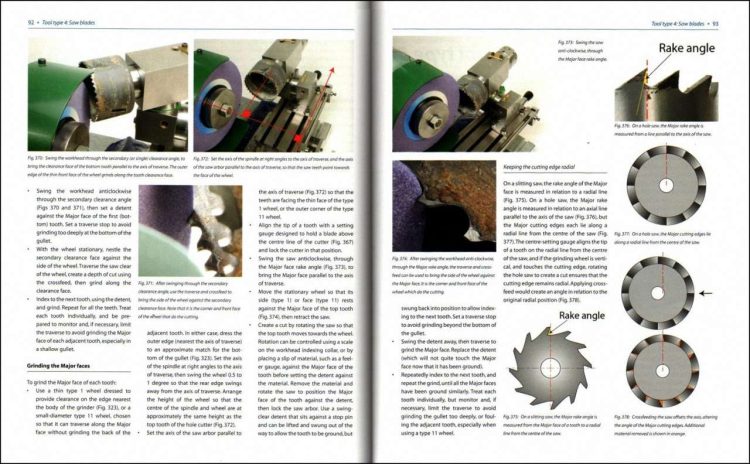
The complexities of Milling cutters are explained in their dedicated Tool type section.
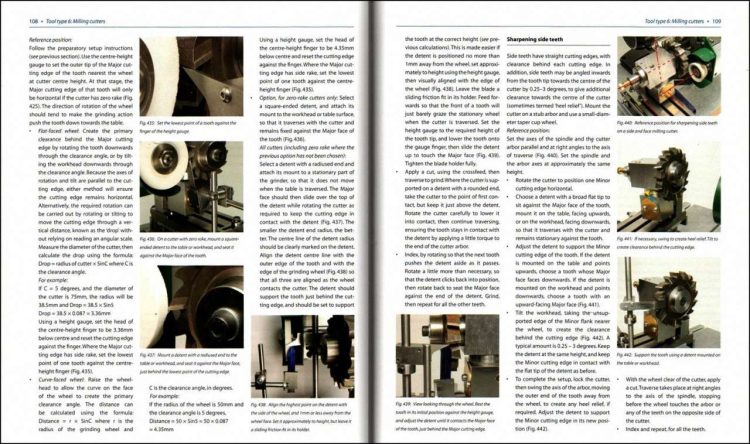
In summary, this is a very useful book for anyone looking to enter the world of model engineering. It is clearly written with copious illustrations to back up the instructions. A seriously useful introduction to a complex subject and at £16.99 represents good value for money. Highly recommended.
The book is available to purchase from Amazon and from The Crowood Press, although the publisher has a rider on its website that it is temporarily unable to deliver orders to the EU.
We would like to thank The Crowood Press for providing RailAdvent with a copy of the book for review.






Responses